Submitted by chandra on Wed, 2014-09-10 09:50
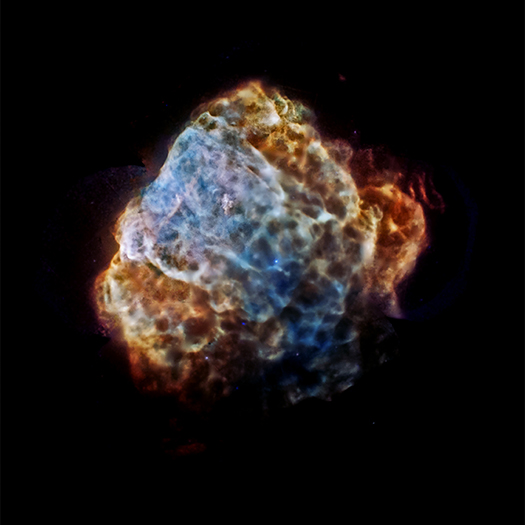
The destructive results of a powerful supernova explosion reveal themselves in a delicate tapestry of X-ray light, as seen in this image from NASA's Chandra X-Ray Observatory and the European Space Agency's XMM-Newton.
Submitted by chandra on Thu, 2014-08-14 09:18
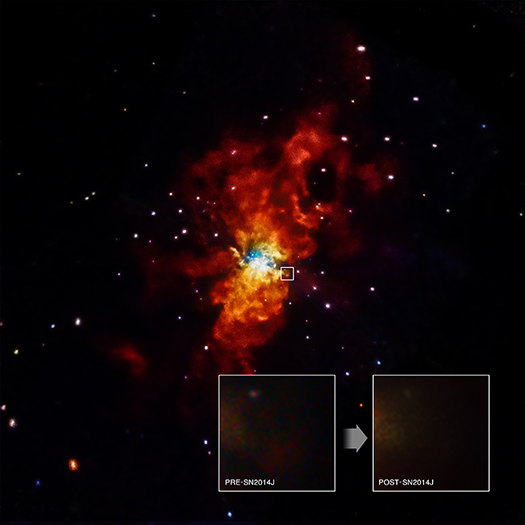
New data from NASA's Chandra X-ray Observatory has provided stringent constraints on the environment around one of the closest supernovas discovered in decades. The Chandra results provide insight into possible cause of the explosion, as described in our press release.
Submitted by chandra on Mon, 2014-07-21 16:31
A month or two after Chandra launched in July 1999, I was asked at a Chandra X-ray Center (CXC) senior staff meeting how long I actually expected Chandra to operate. I spontaneously responded: "23 years". Now that is a number not heard very frequently, so there were lots of quizzical looks indicating that an explanation was in order.
Submitted by chandra on Thu, 2014-04-10 13:50
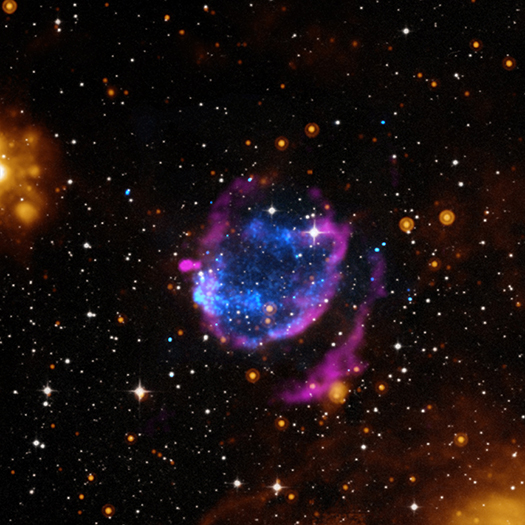
Supernovas are the spectacular ends to the lives of many massive stars. These explosions, which occur on average twice a century in the Milky Way, can produce enormous amounts of energy and be as bright as an entire galaxy. These events are also important because the remains of the shattered star are hurled into space. As this debris field - called a supernova remnant - expands, it carries the material it encounters along with it.
Submitted by chandra on Tue, 2014-02-18 10:53
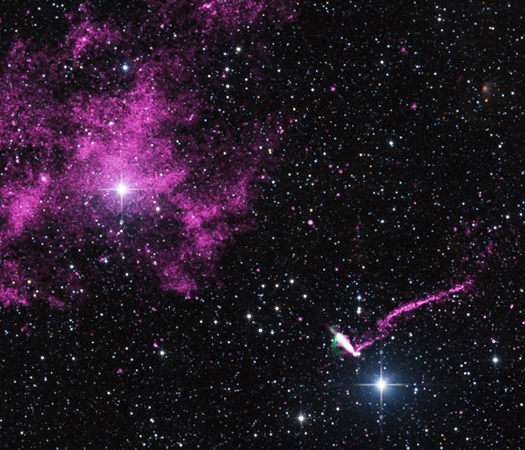
An extraordinary jet trailing behind a runaway pulsar is seen in this composite image that contains data from NASA's Chandra X-ray Observatory (purple), radio data from the Australia Compact Telescope Array (green), and optical data from the 2MASS survey (red, green, and blue). The pulsar - a spinning neutron star - and its tail are found in the lower right of this image (mouse over the image for a labeled version). The tail stretches for 37 light years , making it the longest jet ever seen from an object in the Milky Way galaxy, as described in our press release.
Submitted by chandra on Sun, 2014-02-16 18:38
Lucia Pavan graduated with a master thesis in astronomy at the University of Padova (the same town from which Galileo discovered Jupiter's moons). Four years later she also got her PhD in Physics at the same university, working on "magnetars" -a particular kind of pulsars, with the highest magnetic fields. After the PhD, she obtained a postdoc position at the University of Geneva - Switzerland, working at the INTEGRAL Science Data Center (ISDC). In between, she moved to the US, working at University of Wisconsin-Madison for a few months. She currently lives in Geneva, working at the ISDC.
When I started to work on the sources discovered by the INTEGRAL satellite, I didn’t expect to find an object that was extraordinary not only for the properties of its emission, but also for its extension and shape in the sky. And yet this was the case when I came across IGR J11014-6103.
INTEGRAL is an ESA satellite in operation since 2002, sensitive mainly to X-ray and gamma-ray bands. The satellite has been accumulating data since the beginning of the mission, providing information on an always-growing number of X-ray emitters. It is thanks to this ability that new objects are continuously discovered. A large fraction of the sources that INTEGRAL has found still lacks any physical classification, a perfect area for new findings to be done.
Submitted by chandra on Wed, 2013-12-11 16:30
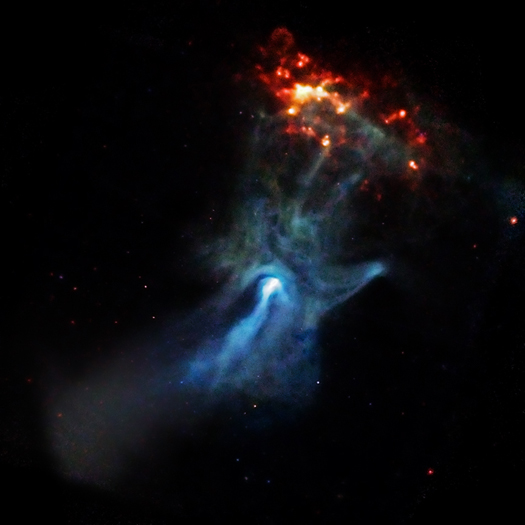
When we released Chandra’s image of the pulsar known as PSR B1509-58 (or, B1509, for short), it received a lot of attention. It's a fascinating object. The pulsar at the center of the image is a rapidly spinning dense star that is spewing out energetic particles into beautiful structures spanning trillions of miles that glow in X-ray light. And, it looks like a giant hand. This fact helped trigger a whole host of other comments about this object found some 17,000 light years from Earth.
Submitted by chandra on Fri, 2013-11-15 09:40
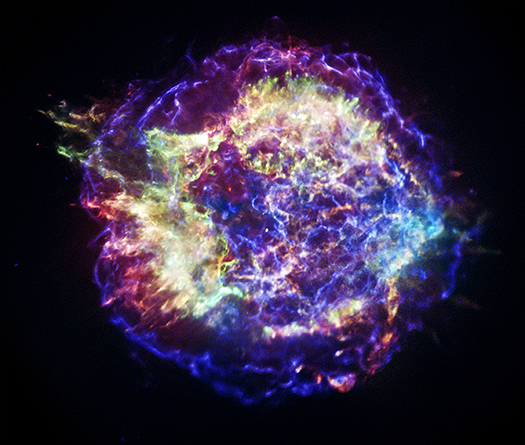
One of the most famous objects in the sky - the Cassiopeia A supernova remnant – will be on display like never before, thanks to NASA's Chandra X-ray Observatory and a new project from the Smithsonian Institution. A new three-dimensional (3D) viewer, being unveiled today, will allow users to interact with many one-of-a-kind objects from the Smithsonian as part of a large-scale effort to digitize many of the Institutions objects and artifacts.
Pages